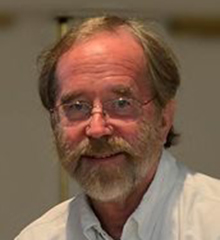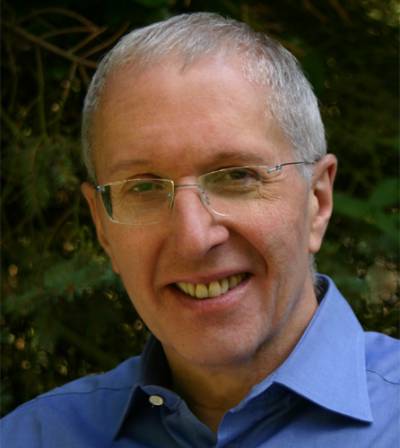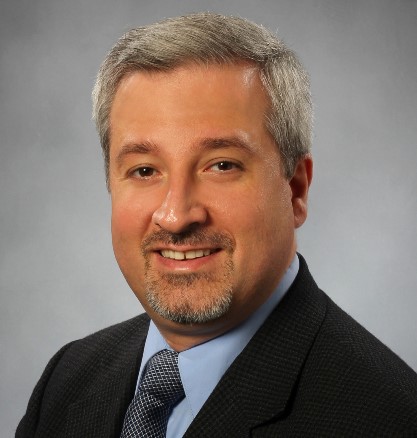Plenary session

The plenary session is scheduled for Wednesday morning, 21st September (Main Hall) and will consist of:
09:00 - Introduction - Conference Organizers
09:10 - Welcome address by the Rector of the Warsaw University of Technology
09:15 - Welcome Address by E-MRS President
09:20 - Presentation of the Jan Czochralski Award to Prof. Joseph E. Greene
09:20 - Czochralski Award laureate - Prof. Joseph E. Greene, University of Illinois, USA (lecture delivered by Prof. Lars Hultman, Linköping University, Department of Physics, IFM, Sweden)
 |
Atomic-level control during filmgrowth under highly kinetically Lars Hultmana and Ivan Petrova,b,c a Department of Physics (IFM), Linköping University, Sweden |
|
|
As a graduate student at University of Southern California, USA, Joe Greene was growing epitaxial GaAs(001) films by liquid-phase epitaxy. The layers were of very high purity as demonstrated by Hall and photoluminescence measurements, but he had no techniques sensitive enough to determine the remaining residual impurities. This led Joe to develop glow-discharge optical spectroscopy (GDOS), the optical analog of modern SIMS. As-deposited films were sputter etched and a spectrometer used to scan the emission peaks arising from the decay of sputtered atoms excited in the discharge. He found that the primary residual impurity was Sn and, via the use of calibration samples (based upon Hall measurements), he determined absolute Sn concentrations (initial detection limit = 3x1016 atoms/cm3, 680 ppb). At the University of Illinois at Urbana-Champaign, in addition to GDOS, Joe continued epitaxial semiconductor film growth, but switched to SiGe via UHVCVD, metastable (III-V)1-x(IV2)x (the "Greene" alloys) by UHV sputter deposition, and GaN by reactive-ion MBE. SiGe CVD was carried out in UHV in order to employ in-situ surface-science tools (RHEED, TPD, AES, XPS, UPS, HR-EELS, STM) to investigate atomic-scale growth kinetics. His teamdeveloped models, with no fitting parameters, to accurately predict Si, Si1-xGex, Si1-xCx, and Ge1-xSnx film growth rates, compositions, and doping profiles as a function of precursor partial pressures and deposition temperatures. The models are still used worldwide today. The Greene alloys (e.g.: (GaAs)1-x(Ge2)x) were grown across pseudobinary phase diagrams and exhibited good thermal stability. They have interesting electronic transport, band structure, and phonon properties and are currently used in tunable photodetector and piezoelectric devices. Following an invitation to present a Swedish Academy of Science Lecture in the 1980s, colleagues from Linköping University, Sweden, in the group of Jan-Eric Sundgren ignited Joe Greene’s interest in transition-metal (TM) nitrides. The field of nitride hard-coatings was already developing rapidly, but reported properties varied by up to orders of magnitude. The hope was to make a contribution by growing and measuring fundamental properties of single-crystal compounds and alloys of groups IIIB, IVB, VB, and VIB TM nitrides using tunable magnetically-unbalanced magnetron sputtering which together with Bill Sproul, Dieter Münz, and Ivan Petrov, was developed in 1992. They also demonstrated vacancy hardening, enhanced hardness in superlattices with alternate layers chosen to have large differences in shear moduli, strong electron/phonon interactions, enhanced ductility using alloy design via electronic structure, and self-organized nanostructures. With polycrystalline TM nitrides, with TiN, TiAlN, and TaN par excellence, Joe contributed to develop a process for real-time control of preferred orientation using high-flux/low-energy ion irradiation as demonstrated by XRD and TEM. Recently, the growth of fully-dense/low-stress/high-hardness alloys, with no substrate heating, based upon a novel hybrid dc-magnetron/HiPIMS approach was realized together with Grzegorz Greczynski and Lars Hultman at Linköping. Thin film growth experiments were combined with Kinetic Monte Carlo simulations, Ab initio calculations, Ab initio molecular dynamics (MD) simulations, and Classical MD performed by Davide Sangiovanni and Valeriu Chirita during Joe’s guest professorship at Linköping High fluxes of low-energy (~20 eV) ions was shown to control atomic layer roughening and yield low-temperature sputter epitaxy, as adatoms diffusing on an upper terrace require an additional energy (the Ehrlich barrier) to cross descending step edges and move into a deep trap due to higher bond coordination. The barrier asymmetry at step edges otherwise leads to up-hill flux resulting in kinetic roughening. |
||
10:05 - Prof. Sir Michael Pepper, University College London, Faculty of Engineering Science, U.K.
 |
Electron Interactions in Quasi-1D Semiconductor Nanostructures Michael Pepper Department of Electronic and Electrical Engineering and London Centre for Nanotechnology |
|
|
Lateral confinement of electrons in a 2D electron gas results in the establishment of size quantized quantum levels and a quantization of the conductance.The levels appear at values of conductance of 2ne2/h, where n is the subband index and the factor of 2 arises from the spin degeneracy. However, as the width of the conducting channel increases but transport is still quasi-1D the energy levels become determined by the mutual interactions between the electrons. As the ground state changes with increasing interaction the carriers will tend to adopt a zig-zag configuration to decrease the electron-electron repulsion. We describe our recent work in which the behaviour of the levels and the conductance values have been measured in wide channels at very low values of carrier concentration, just priot to the transition to 2D transport. Using holes in Ge and electrons in GaAs evidence is presented for the splitting of the line of electrons comprising the ground state into two. Following this ground state splitting we observed non-magnetic fractionally quantized conductance plateaus which for holes in Ge may correspond to fractional charges of e/2 and e/4. Electrons in GaAs showed a strong (2/5)e2/h plateau which can be theoretically explained on the basis of interaction enhanced backscattering, however we have observed even fractions at values of 1/2 and 1/6 which are difficult to explain on this basis and could be a result of a pairing. References Gul, Y., Holmes, S. N., Myronov, M., Kumar, S., & Pepper, M. (2018). Self-organised fractional quantisation in a hole quantum wire. Journal of Physics. Condensed Matter, 2018, 30 09LT01 |
||
10:50 - Prof. Mauricio Terrones, Penn State University, Department of Materials Science and Engineering, USA
 |
Defect Engineering in 2D materials: Magnetism, bio-applications and catalysis Mauricio Terrones1 1Department of Physics, Department of Chemistry
|
|
|
A long-standing puzzle in the field of Two-dimensional (2D) materials is the effect and understanding of different types of defects in their electronic, magnetic, catalytic and optical properties. In this talk an overview of different defects in transition metal dichalcogenides (TMDs) and hBN monolayers will be presented. We will emphasize doping and alloying of V, Fe and Mn in monolayers of MoS2, WS2, and WSe2 and describe their implications in magnetism, as well as in electronic transport. We will also describe the catalytic effects of edges, vacancies and local strain observed in hBN and MoxW(1-x)S2 monolayers by correlating the hydrogen evolution reaction (HER) with aberration corrected scanning transmission electron microscopy (AC-HRSTEM). Our findings demonstrates that it is now possible to use 2D materials for the fabrication of more effective catalytic substrates, however, defect control is required to tailor their performance. By studying photoluminescence spectra, atomic structure imaging, and band structure calculations, we also demonstrate that the most dominating synthetic defect—sulfur monovacancies in TMDs, is responsible for a new low temperature excitonic transition peak in photoluminescence 300 meV away from the neutral exciton emission. We further show that these neutral excitons bind to sulfur mono-vacancies at low temperature, and the recombination of bound excitons provides a unique spectroscopic signature of sulfur mono-vacancies. Finally, the electronic effects of C-H defects within TMDs will be discussed, as p-type doping could be controlled by the presence of C within TMDs. References [1] K. Fujisawa, et al. ACS Nano 15, 9658 (2021). [2] F. Zhang, et al. Advanced Science 7, 24 (2020). [3] F. Zhang, et al. PNAS 117, 19685 (2020). [4] Y. Lei, et al. Materials Today 51, 108 (2021). |
||
Polish Academy of Sciences Al. Lotnikow 32/46 02-668 Warsaw POLAND
4822 8436601 x 31654822 8430926
mycie@ifpan.edu.pl
Peter-Grünberg-Straße 2, 64287 Darmstadt, Germany
anke.weidenkaff@mr.tu-darmstadt.deDepartment of Electronic & Electrical Engineering, Torrington Place, London WC1E 7JE, U.K.
a.kenyon@ucl.ac.ukVia Salaria km 29.5, Monterotondo, 00015 Rome, Italy
giuseppina.padeletti@cnr.it